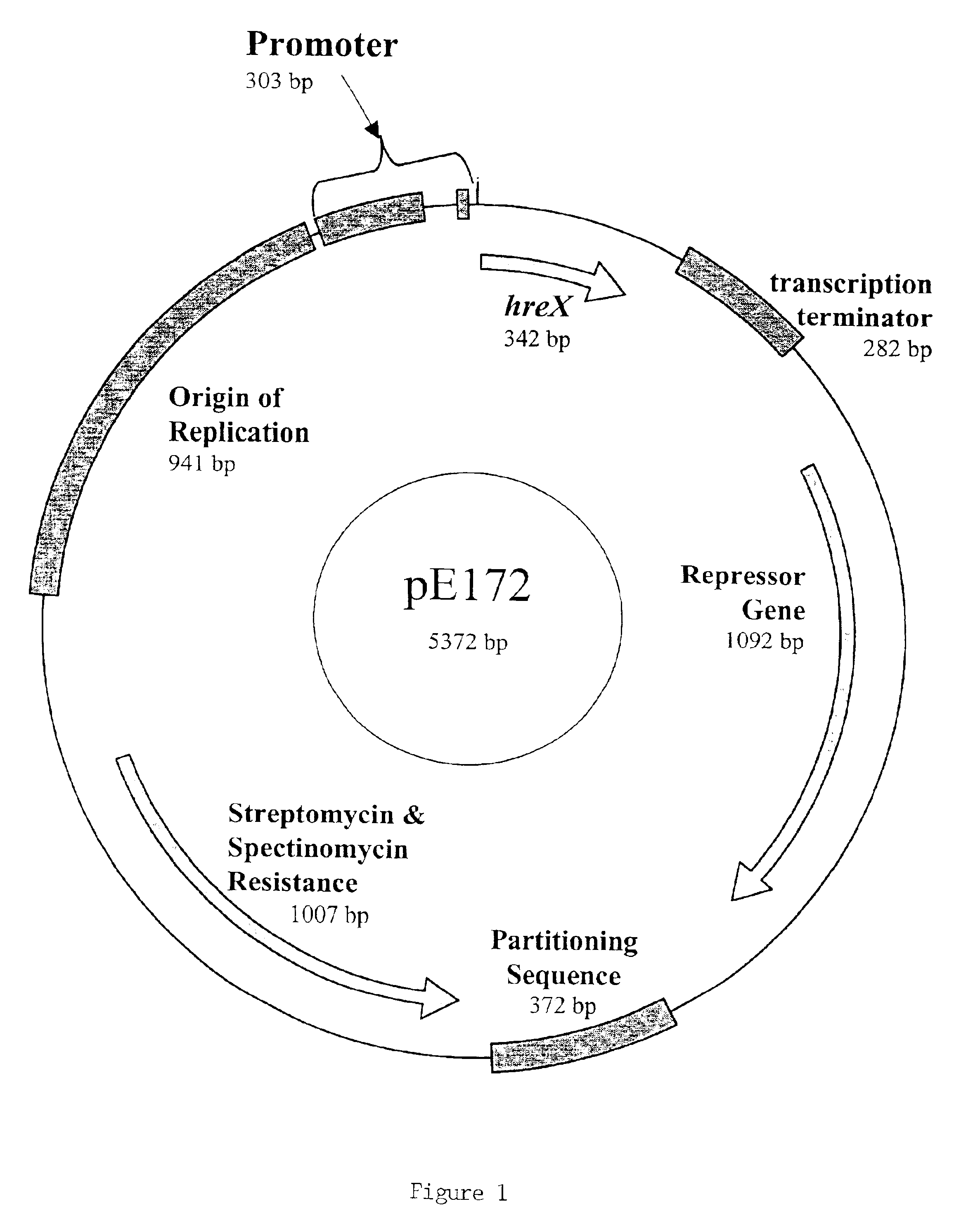Nucleic acid encoding a hypersensitive response elicitor from Xanthomonas campestris
- Summary
- Abstract
- Description
- Claims
- Application Information
AI Technical Summary
Benefits of technology
Problems solved by technology
Method used
Image
Examples
example 1
Cell-Free-Elicitor-Preparation
[0085]The first step in the identification and purification of the Xanthomonas campestris pv. pelargonii hypersensitive response elicitor (Xcp HR elicitor) was the development of a cell-free-elicitor-preparation, or CFEP. CFEP production involved culture growth, sonication of the resuspended cell pellet, and heat treatment of the sonicate.
[0086]1. Culture Growth
[0087]Xanthomonas campestris pv. pelargonii (Xcp) was grown on plates containing LA. Seed cultures were inoculated from these plates and grown in 50% LB at approximately 27° C. (room temperature), until an optical density (OD620) of 0.5 to 0.8 was achieved. The seed cultures were then used to inoculate minimal media cultures in a manner such that no LB was introduced into the minimal media. A 1:10 ratio of seed culture to minimal media was used to inoculate into the minimal media cultures (i.e. the cell pellet from a 50 ml seed culture was used to inoculate 500 ml of minimal media). The minimal m...
example 2
Elicitor-Induced Hypersensitive Response
[0095]The Xcp HR elicitor CFEP was infiltrated into several plants for HR analysis. The CFEP induced HR in species of tobacco, tomato, and bean. It did not induce HR in geranium, the host organism of Xanthomonas campestris pv. pelargonii.
example 3
[0096]To confirm that the Xcp HR elicitor was a protein, protease digestions were performed with HR active CFEP. CFEP was inoculated with proteinase at a concentration of 2 mg / ml. After incubation at 37° C., the protease inoculated CFEP along with the positive control (CFEP alone) and negative control (protease K at 2 mg / ml in lysis buffer) were infiltrated into tobacco plants. The proteinase inoculated CFEP showed no signs of HR. The positive control showed symptoms of HR, the negative control showed no signs of HR. These results indicated that the Xcp HR elicitor was sensitive to protease digestion and therefore a protein. This experiment was repeated several times with different batches of CFEP, each time with the same results.
PUM
| Property | Measurement | Unit |
|---|---|---|
| Electrical resistance | aaaaa | aaaaa |
| Hypersensitivity | aaaaa | aaaaa |
Abstract
Description
Claims
Application Information
 Login to View More
Login to View More - R&D
- Intellectual Property
- Life Sciences
- Materials
- Tech Scout
- Unparalleled Data Quality
- Higher Quality Content
- 60% Fewer Hallucinations
Browse by: Latest US Patents, China's latest patents, Technical Efficacy Thesaurus, Application Domain, Technology Topic, Popular Technical Reports.
© 2025 PatSnap. All rights reserved.Legal|Privacy policy|Modern Slavery Act Transparency Statement|Sitemap|About US| Contact US: help@patsnap.com

